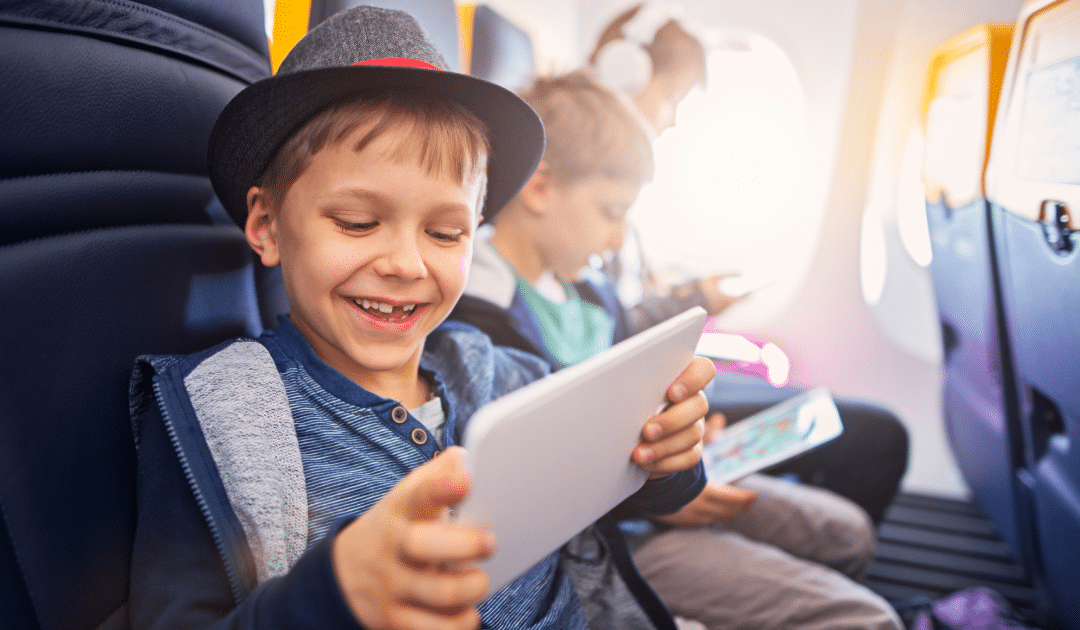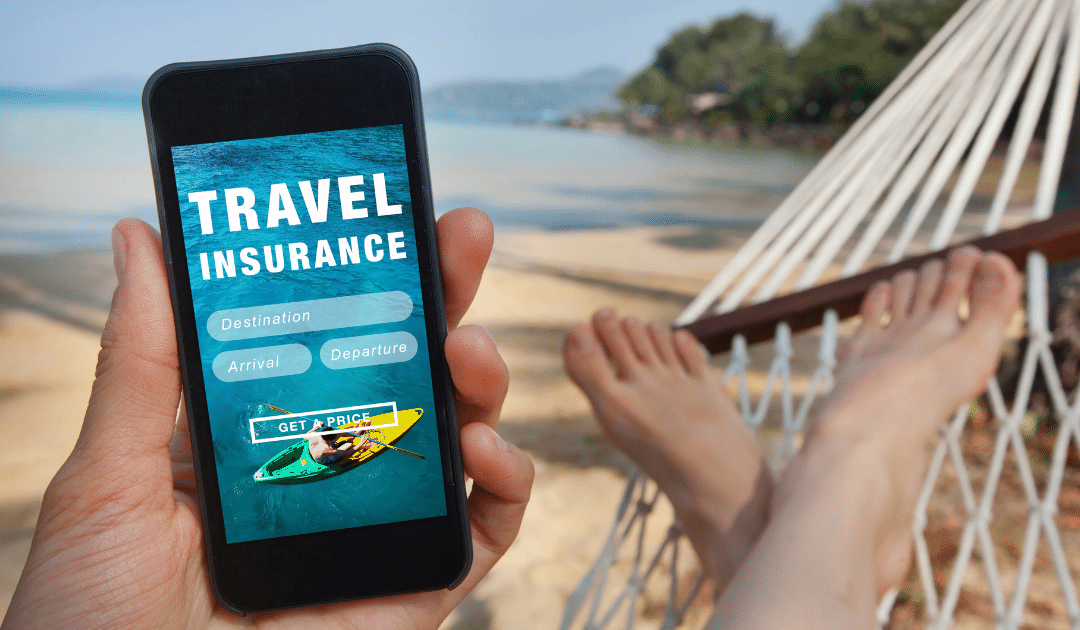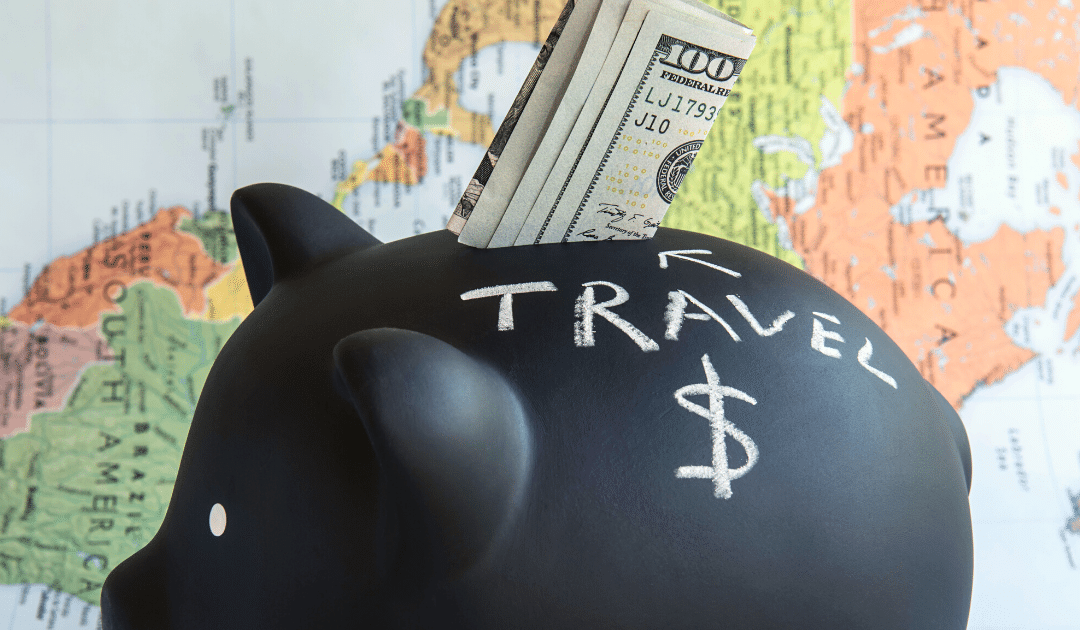
by California Casualty | Travel |
Looking forward to relaxing on a warm beach, hitting the slopes on a scenic mountain, or choosing day trips for a stress-free staycation this Spring Break?
Check out our timesaving guide for planning your next vacation or staycation.
Set your budget.
Where can you go and what can you do? It depends on your budget. A travel budget is not an ironclad number; it’s more of an estimate. Think of a figure that you’d be willing to spend on a vacation or a staycation. Then determine if that amount covers the major expenses of your trip: accommodations and travel expenses.
-
- Research travel deals and airfare specials.
- Check out the rates of less popular airports near your destination to save money.
- Rent a car instead of flying.
- Check out different lodging options.
Choose your destination.
What’s your vacation style? Maybe you like touring museums and cultural attractions or you prefer lounging by the pool. You might like being active, such as skiing, hiking, or bicycling. The types of vacation that you most enjoy will help determine your destination. Match that to the budget and you’ll be able to choose a great destination.
-
- Take advantage of discounts, such as credit card points, AAA, or military.
- Check out additional discounts on Groupon, Kayak, Priceline, booking.com, and other services.
- Book your airfare and/or reserve your rental car.
- Create a draft travel itinerary. Buy tickets for popular activities so you won’t arrive and find them sold out.
Select your accommodations.
You may not be spending a lot of time in your room, but you do want a central location that allows you to do what you want to do. In some cases, like on a staycation, your lodging may be your entire vacation because it provides everything you need.
-
- Determine the amenities that are important to you. Do you want a kitchen where you can cook meals? A beachside location? A place that’s walking distance to everywhere you want to be? On-site entertainment? All-inclusive services?
- You can stay in a hotel, a cabin, a treehouse, a resort, a bed-and-breakfast, on a cruise ship, or any of a number of options. Choose the right lodging for your vacation style and your budget.
- Do you have friends or family that you’d like to visit? Consider staying with them and incorporating them into your vacation plans for all or part of spring break. Alternatively, see if they’d like to swap houses with you for the week.
Purchase insurance just in case.
Accidents happen and plans change. That’s where travel and rental insurance come in. Travel insurance can reimburse you if you are unable to go on your trip. Rental car insurance can help in the event of a collision or other damage to your rental car.
-
- Before you purchase rental car insurance, make sure your auto policy doesn’t already cover rental cars. Many policies do.
- If you’re renting a car out of the country, double-check that your auto policy covers you. For example, when traveling in Mexico, you will need a special Mexico policy.
- Travel insurance comes in many varieties. You can get trip cancellation, trip interruption, or trip delay insurance. You also can get baggage loss coverage. Talk to your insurance provider about what is available to you.
- You also can get medical expenses and medical evacuation coverage. This is important for trips outside the country. Once again, speak to your insurance provider to make sure you qualify for the coverage.
For the foreseeable future, you will want to take precautions to guard against COVID-19. After all, it’s no fun to be sick on vacation; neither is it a good idea to bring a virus back to your students. When traveling, follow these guidelines.
-
- Some destinations require COVID tests. Know the rules and regulations so that you can schedule your test before your trip or at the airport.
- Wear your mask at the airport and on the plane.
- Wash your hands frequently.
- Avoid crowds where possible, and stay 6 feet away from others.
Plan a staycation.
A staycation can be as much fun as a vacation with the advantage of being a lot more affordable. While you can certainly use the time for projects around the house, you can enjoy a real break by planning day trips and fun activities.
-
- You don’t technically have to stay home during a staycation. Consider one or two nights at a local hotel or other fun lodging.
- Choose a theme for your staycation, such as gourmet traveler, spa serenity, or tourist in your own town. Use it to inspire your activities.
- Enjoy fun takeout or restaurant meals that make the week feel special.
- Disconnect from social media and the news. Enjoy movie nights, game nights, and other interactive fun.
- Don’t forget that Educators & ESPs can win a $10,000 Staycation Giveaway from California Casualty!
What are your plans this Spring Break? Share it with your colleagues in the comments.
This article is furnished by California Casualty, providing auto and home insurance to educators, law enforcement officers, firefighters, and nurses. Get a quote at 1.866.704.8614 or www.calcas.com

by California Casualty | Educators, Safety, Travel |
Back-to-school means back to hectic schedules. Between sports, clubs, and other after-school events it feels like you are being pulled in all directions. Considering that other parents are making the same hectic trek, there’s an opportunity to lighten the load. Carpooling.
Not only can carpooling free up your schedule, but it can also help you save on gas. (Definitely a bonus!) Follow these tips to set up your carpool experience for success.
1. Find your carpool buddies.
It’s best to carpool within a trusted network of fellow parents. Don’t worry about coordinating around age or gender. The goal is to make your life easier and not simply offer car time for your child and his bestie.
That being said, start with your child’s friend group and see who might be joining the same activities. If they live nearby, that could be a match. Otherwise, ask the coach or coordinator for a parent contact list and reach out to those who live close to you. Also talk to parents at activity pickup, at school PTO meetings, or at your local religious services. Even friends of friends might be good carpool candidates.
Pro Tip: Pick the right number of kids for your carpool. Younger children need more attention and so their carpools should be smaller.
2. Set the schedule.
It’s important to make a set schedule so that kids aren’t left waiting. Using a carpool app can help you organize, and some apps even come with reminders. Some popular apps include Carpool-kids, Waze Carpool, and GoKid. You can even use Signup Genius or Google sheets. (If you use Google, you will want to download the sheets app to your smartphone.) You also can do an email or text chain.
Choose the system that works for your group and make sure everyone is comfortable with it. Also, it’s important to make sure you can communicate with other parents in the case of an emergency, accident, sickness, or unexpected change of plans. (Anyone who has forgotten an early dismissal day knows the importance of communication.)
Pro Tip: Post a copy of the carpool schedule near the door and include it in your child’s backpack. This way, he or she knows who is picking up.
3. Set expectations.
If possible, schedule an in-person meeting with your carpool participants. Not only does it make it easier to create the schedule, it helps you come to an agreement on rules and expectations. For example, how many minutes late is too late? What is the policy if you’re picking up a child who is not ready? Verify schedules and conflicts. Determine food allergies if any. Inquire about health-related concerns.
Pro Tip: Important point for discussion: Don’t let anyone outside of the carpool cover the route (e.g. babysitter, grandma) unless every parent is aware and agrees.
4. Stay safe.
Don’t forget to discuss the safety rules. For example, children must enter and exit the vehicle from the curbside. Only kids who are 13 and older may ride in the front passenger seat. Students who do not meet the necessary height and weight requirements must ride in a booster seat.
For carpools, consider harness-style options that move the seatbelt down, rather than boost the child up, such as the WhizRider. These lightweight accessories can travel with your child and fit right in their backpack for easy access for carpooling.
5. Do a practice run.
You know the route to your child’s activities but you may not be familiar with the addresses where you are dropping your carpool kids. Do a practice run with the kids. Take a trip to the local ice cream parlor or head to the library. This will help you to work out any issues before you start.
6. Bring snacks.
If you’re shuttling kids from school to after-school activities, snacks and drinks are a must. Even if you’re just taking them home, you’ll find that food and drinks help to keep them happy. Greet kids with healthy portable snacks that don’t create too much mess. Chilled water in reusable bottles make a great choice because if they’re spilled, there won’t be too much mess. Keep any food allergies in mind when selecting snacks; alternatively, you can ask parents to pack their own child’s treat.
Pro Tip: Have a cleanup pack on hand that includes paper towels and baby wipes. Put a trash bag in the backseat where the kids can put their trash.
7. Don’t forget entertainment.
Even a short car ride can be made more enjoyable when the occupants are entertained. This may include car karaoke with their favorite songs or taking turns reading aloud from a joke book. You also may want to provide games with magnetic pieces. Just make sure you have a place to store them, such as with a backseat organizer. For older kids with different musical preferences, headphones work well as they listen or watch on their devices. Finally, if you’re going to be waiting in the car, keep the things that entertain you. Bring a favorite book, a relaxing playlist, and a charger, and enjoy some much-deserved quiet time.
8. Check in with your child.
Things may be going well on your end, but you don’t know what happens when the other parents are driving. Check-in periodically with your child. Get his or her perspective on the carpool, and make adjustments as needed. It’s also a chance to determine if you need to rethink participating in a carpool.
Finally, if you’re transporting precious cargo, you’ll want to ensure that your vehicle is carpool ready. Keep your car well maintained. Protect your vehicle with the right insurance for peace of mind.
Safe travels.
This article is furnished by California Casualty, providing auto and home insurance to educators, law enforcement officers, firefighters, and nurses. Get a quote at 1.866.704.8614 or www.calcas.com.

by California Casualty | Firefighters, Peace Officers, Safety, Travel |
You hear sirens and see flashing lights. There’s only one thing to do. Pull over.
There’s a reason you’re moving out of the way.
Even a few minutes delay can be a matter of life and death when you’re traveling by ambulance. The same holds true if a first responder can’t get to the scene of an accident, a fire, or disaster. Emergency vehicles need to get to the place where they can help people. If you’re on the road where they are traveling, you can help them get there by giving them a clear path to their destination.
Your moving car is dangerous to stopped vehicles.
You may have noticed a police officer, a roadside worker, a car pulled over on the side of the road, or even a wreck. Driving by them or rubbernecking at high rates of speed is dangerous. According to the National Highway Safety Administration (NHTSA), “making a traffic or emergency stop on the side of our nation’s highways is one of the most dangerous things law enforcement officers do in the line of duty.”
Every two weeks, a first responder or roadside worker loses his/her life, reported AAA. The agency recommends slowing down to a speed that is 10-20 mph slower than the speed limit and changing lanes to be further away.
Pay attention so you’ll hear and see emergency vehicles.
If you have the radio blaring, if you’re texting, or otherwise distracted, you may not see or hear an emergency vehicle approaching. You might not know that you have to pull over until that vehicle is right there. Not only is that stressful, but your quick actions might also cause a collision.
Here’s what to do when you see lights and hear sirens.
-
- Put on your turn signal and slow down.
- Check your mirrors and make sure the way is clear.
- Move over to the shoulder and park your vehicle.
- Wait until the emergency vehicle has passed. You will want to stay at least 500 feet behind it.
- Check your mirrors, put on your turn signal and carefully pull back into traffic.
Importantly, don’t slam on your brakes. Don’t travel through a red light. Don’t stop in the middle of your lane. And never try to outrun an emergency vehicle.
Where you are, and the direction you’re traveling, matter.
Emergency vehicles don’t always come from behind you. Sometimes they are traveling in the opposite direction, on the other side of the road. Do you still have to move over? Check your state laws for the rules regarding moving over for emergency vehicles.
-
- If you are traveling in a high-speed lane, and there is no room to stop, slow down.
- If you are traveling in the left lane, go right as traffic on the right moves over.
- If you are stopped at an intersection, stay there.
- If the emergency vehicle is traveling on the opposite side of a divided highway, you don’t need to pull over.
- If the emergency vehicle is traveling on the opposite side of the road, and there is no divider, pull over to your right. That vehicle may need to use your lane to get by.
Every state in the U.S. has a move-over law. Most people don’t know about it. Check your state’s law and learn what you need to do to keep everyone safe.
This article is furnished by California Casualty, providing auto and home insurance to educators, law enforcement officers, firefighters, and nurses. Get a quote at 1.866.704.8614 or www.calcas.com.

by California Casualty | Travel |
Traveling with your kids is always an adventure no matter where you go, but let’s face it; flying with young children can be exhausting. Between the endless amounts of luggage (sometimes even including strollers and car seats), working your way through a crowded airport, trying to get everyone through security, all of the bathroom breaks, finding activities for them to do before boarding, dealing with tantrums, etc. you’ve got your hands full.
Flying with your kids takes a lot of planning and preparation (and patience!), but it’s rewarding when finally get to your destination with your entire family in tow. If you are planning a family vacation in the near-distant future, here’s some advice to help you fly with your kids on a less stressful note.
Book direct flights (or longer layovers)
When you are booking your travel avoid layovers whenever possible. Sure your flight might be longer or a bit more expensive, but it’s worth it knowing you won’t have to deal with the grueling process of getting all of your luggage and children on and off of multiple planes. And you won’t have to get your children reacclimated to being in the air all over again. If you have no choice and you have to have a layover, opt for a longer one so kids can have a chance to get their energy out.
Schedule accordingly
We all know a sleep-deprived child is a cranky child, so steer clear of red-eye flights. If you don’t have a certain time that you need to arrive at your destination, you have the advantage of choosing a flight time around your child’s schedule! For example, if their nap time is usually in the afternoon, see if you can book an afternoon flight that way they are more likely to nap during the trip.
Talk to your child about the flight process
Obviously, babies won’t know any better, but toddlers can understand basic rules. So set some easy expectations for your trip. Talk to them about how to behave in the airport, what it will be like going through security, and boarding the plane. They probably won’t remember everything you talked about, but you can always remind them of “what you talked about earlier”. You can’t expect them to succeed if you don’t give them a little bit of direction.
Take advantage of early boarding… or don’t
Airlines usually let families board the aircraft first. You don’t have to, but it may be worth your time to get on the plane right away, stow your carry-ons, and get your child settled before other passengers start to board. On the other hand, you may want to wait to board until the very last minute so your child can get as much energy as they can out before you get in the air. Ultimately, the choice is yours.
Pack the essentials to keep them occupied
Your carry-on should include all of the essentials you and your kids will need for your entire flight. This also includes emergency items, and items that will help keep your children occupied throughout the flight; like backup pacifiers, toys, games, ipads, extra headphones, baby wipes, extra formula, extra clothes or diapers, etc.
Be prepared for a meltdown
Children are unpredictable little creatures, one minute they are completely fine and the next they are kicking and screaming for no apparent reason. Pair this with their ears popping and being stuck in one place for hours and you’ve got yourself a meltdown waiting to happen. Be prepared to use any calming mechanism necessary and ride out the storm.
Snacks should also help!
Nothing calms down a screaming toddler better than pulling out a tasty bag of treats that you snagged from one of the snack stands on your way to board. You never know what kind of food the flight attendant will pull out, so be prepared with a few options you know your child loves.
Answering the “Are we there yet?” questions
Questions like “How much longer?”, “Are we getting close?” are signs that your child is getting restless during the flight. You could handle this one of two ways. Pull up the flight map, either on the monitor on the screen in front of you or on your phone, and entertain your child by letting them watch your plane’s path. Or if your child has no interest and watching the plane, let them know that you will be landing soon. Even if soon is an hour away, this will encourage them to sit tight and try to hold their wiggles in until you land.
Lastly, don’t be embarrassed. Accept that you can’t control everything. On some flights, your kids may act perfectly calm and on some flights, they may not and that’s ok. Don’t be afraid of being “that” family. You are doing the best you can and chances are, outside of the airport, you will probably never seen the majority of the people on your flight ever again. These things happen to everyone. Don’t let a bad flight ruin your whole trip.
As always, don’t forget to protect your trip with the correct insurance coverage. And for more travel tips, like how to save money when you travel, click here.
This article is furnished by California Casualty. We specialize in providing auto and home insurance to educators, law enforcement officers, firefighters, and nurses. Get a quote at 1.866.704.8614 or www.calcas.com.

by California Casualty | Travel |
If you’ve ever had to cancel a vacation or had an accident with a rental car, you know the value of insurance. But how much travel and rental car insurance do you need and do you really always need it?
Types of Travel Insurance
The two most popular types of travel insurance are…
- Vacation Plan. It provides the most coverage in a single policy, including trip cancellation, lost luggage, travel delays, emergency medical assistance, and more. This type of plan usually comes with 24/7 assistance.
- Medical Plan. Your health insurance policy doesn’t cover you outside the U.S.— or if it does, it’s often not a lot of coverage. Travel medical plans cover healthcare expenses and can connect you with a local doctor or pharmacy. Some plans cover pre-existing conditions. They also cover emergency medical evacuations, if you need to be airlifted to a hospital.
There also are specialty travel policies that you can buy. These include medical evacuations only, accident insurance, and rental car insurance. Read more about rental car insurance, below.
Why you need travel insurance:
-
- You don’t want to lose all your money from a prepaid trip that has to be canceled (for illness, a funeral, etc.).
- Flights can be delayed, necessitating unexpected expenses for meals and lodging.
- Lost luggage can spoil your trip.
- Accidents happen and health crises occur. Medical evacuations can be costly.
- Travel insurance can provide peace of mind, and assistance when you need it.
What to look out for in a travel insurance plan:
-
- Make sure you insure the full value of your trip. If you just insure your deposit, that’s the amount you’ll recoup.
- Make sure your plan has enough for emergency medical evacuation. This can sometimes be in the thousands of dollars.
- Know the services that come with your policy. It could include translation, concierge services, and 24-hour travel assistance. If you’re paying for these services, you might as well use them.
- Watch out for “cancel for any reason” coverage. Usually this is a substantial extra expense, and in most cases, is not needed. Check the reasons that you can cancel for the standard policy. Usually, those will cover what you need.
Types of Rental Car Insurance
Rental car insurance is a specialized kind of travel insurance. You can purchase rental car insurance as an add-on with many travel insurance policies. You will be offered the opportunity to buy rental car insurance when you rent a car. These coverages are all optional.
Following are the types of coverage you may be offered:
-
- Collision/Loss Damage Waiver – This covers the cost of repairs in the event of an accident. Rental car companies can charge you for more than just the damage. They can also bill for towing charges, loss of use, diminished value, and administrative fees.
- Supplemental Liability Protection – If you cause an accident, liability pays for the damage to another person or property.
- Personal Effects Coverage – This helps cover items stolen from your rental car (e.g. laptop, clothing). You may have this coverage through renter’s insurance.
- Personal Accident Insurance – This pays your and your passenger’s medical bills as well as for an ambulance and death benefits. You may already have this coverage through your health, life, or auto insurance.
Before you purchase rental car insurance, make sure you don’t already have coverage under your personal auto insurance policy, your health insurance, life insurance or your credit card. Know what your insurance covers in terms of car rentals, including the deductible you may need to pay in the event of an accident.
When you need rental car insurance:
-
- If you’re traveling for business, your personal auto policy will not cover you. You will need rental car insurance.
- If renting a vehicle of higher value than the car you usually drive, your auto policy may not provide enough insurance. In that case, you may need additional insurance.
- If you’re worried about your premiums going up due to a rental car accident using your own insurance, get the rental insurance.
What to look out for when purchasing rental car insurance:
-
- Some rental car companies will ask for damages above policy limits. So you should still read the rental contract to see what would work best for you.
- If you’re using your credit card’s rental car insurance, make sure you pay for the rental car using that card or it won’t cover you. Also, don’t sign up for supplemental rental car insurance. That may negate credit card coverage.
- Check your credit card terms for insurance. Sometimes insurance does not apply to luxury vehicles, RVs, motorcycles, or trucks.
- Credit card insurance doesn’t cover you in some countries, including Ireland, Israel, Italy, Jamaica, and Australia.
California Casualty offers rental car insurance on vacation with our auto policies! If you carry liability and physical damage coverage on your vehicle, you may extend that coverage to a rental car. Your coverage applies as long as you, your spouse, or a resident relative is driving the rental car.
Plus, we will waive the collision deductible for a collision with another Cal Cas policyholder, with an “identified” uninsured motorist, or while operating a rented non-owned vehicle while on vacation.
This article is furnished by California Casualty, providing auto and home insurance to educators, law enforcement officers, firefighters, and nurses. Get a quote at 1.866.704.8614 or www.calcas.com.

by California Casualty | Travel |
Traveling can make money disappear fast – from flights to accommodations to activities, costs can add up quickly. But the good news is, they don’t have to!
We got some inside tips from the traveling pros on how you can save big and find the best deals the next time you travel.
Tip #1: Search airline deals for off-peak rates using anonymous browsers.
The most expensive flights occur when most people are traveling. Use that knowledge to book flights during times when airlines are less busy such as mid-week or outside tourist season.
Tip #2: Sign up for credit cards that give you travel points.
If you love to travel, consider a credit card that gives you travel points. Many frequent travelers use this system to earn free flights or stay for free in their destination of choice.
-
- You get bonuses from many cards just for signing up.
- Then you have to spend to accumulate more points. Consider using this credit card to pay your rent or mortgage, car payment or other larger monthly bills. It’s like using any other account, but with a travel bonus!
Tip #3: Choose a destination where your money is actually worth more.
When you’re considering where to travel, think about countries where the dollar is strong. That will make your money go further.
-
- You’ll find cheaper travel in Asia: Vietnam, Nepal, Thailand Laos, Indonesia Mexico, Colombia, Brazil, and Bolivia.
- You’ll also find great deals in and near Europe: Romania, Ukraine, Turkey, and Georgia.
- Some countries will even reimburse you for all or part of the retail sales tax that you spend there. These include Canada, Japan, Taiwan, and the United Kingdom. Keep your receipts and fill out the forms. You will need an official stamp by customs at the airport.
Tip #4: Be creative in your accommodation choice.
You can stay in a hotel and perhaps earn loyalty points. Or you can find some unusual local places simply by searching for alternative places to stay.
-
- Airbnb is one of the most well-known accommodation sites. But make sure you also have a look at its competitors: Tripping.com, HomeToGo.com, FlipKey.com, OneFineStay.com, Vrbo.com, HouseTrip.com, and Couchsurfing.com.
- Save money by staying in the lesser-known town close to where you want to be.
- Trade homes. Stay in a family’s home while they stay in yours. Check out sites like HomeExchange.com that matches you with your preferred destination.
- Check out housesitter.com to see if you can housesit in the place where you’d like to vacation. Then you’ll stay for free!
Tip #5: Go local for activities and meals and embrace the discounts.
You may want to hit the highlights of your destination’s tourist sites, but chances are the most memorable experiences will be the ones that you discovered while you were there. In planning your travel itinerary, here are some hints.
-
- Talk to locals and get their recommendations for things to do and places to eat.
- You can eat with local families via https://www.eatwith.com.
- Research the free or discounted days and times at museums and galleries, book standing-room-only tickets at shows, and ask about age-related, student, and group membership discounts.
- Take public transportation or walk rather than renting a car. You’ll see more and it will cost less. Consider a frequent travel card for public transport (Oyster card in London, Octopus in Hong Kong).
Tip #6: Avoid international roaming charges.
Your smartphone or laptop may work overseas but it could land you a huge bill for WiFi upon your return. Plus, the WiFi charges at hotels can come with extra charges. Take some steps to get inexpensive WiFi where you travel.
-
- Check with your smartphone provider about an international travel plan to see if it’s cost-effective. You can also ask them to unlock your phone so that you may insert a local SIM card while you’re in a new country.
- Rent a mobile router known as “pocket WiFi.” These hotspots are popular in Europe and Japan.
- Rent an international cell phone. But remember, if you use your phone as a camera, you’ll want to upload those photos to the cloud (or use your original phone or a real camera to take photos).
Enjoy the journey—and the savings. Stay safe and happy travels.
This article is furnished by California Casualty, providing auto and home insurance to educators, law enforcement officers, firefighters, and nurses. Get a quote at 1.866.704.8614 or www.calcas.com.






